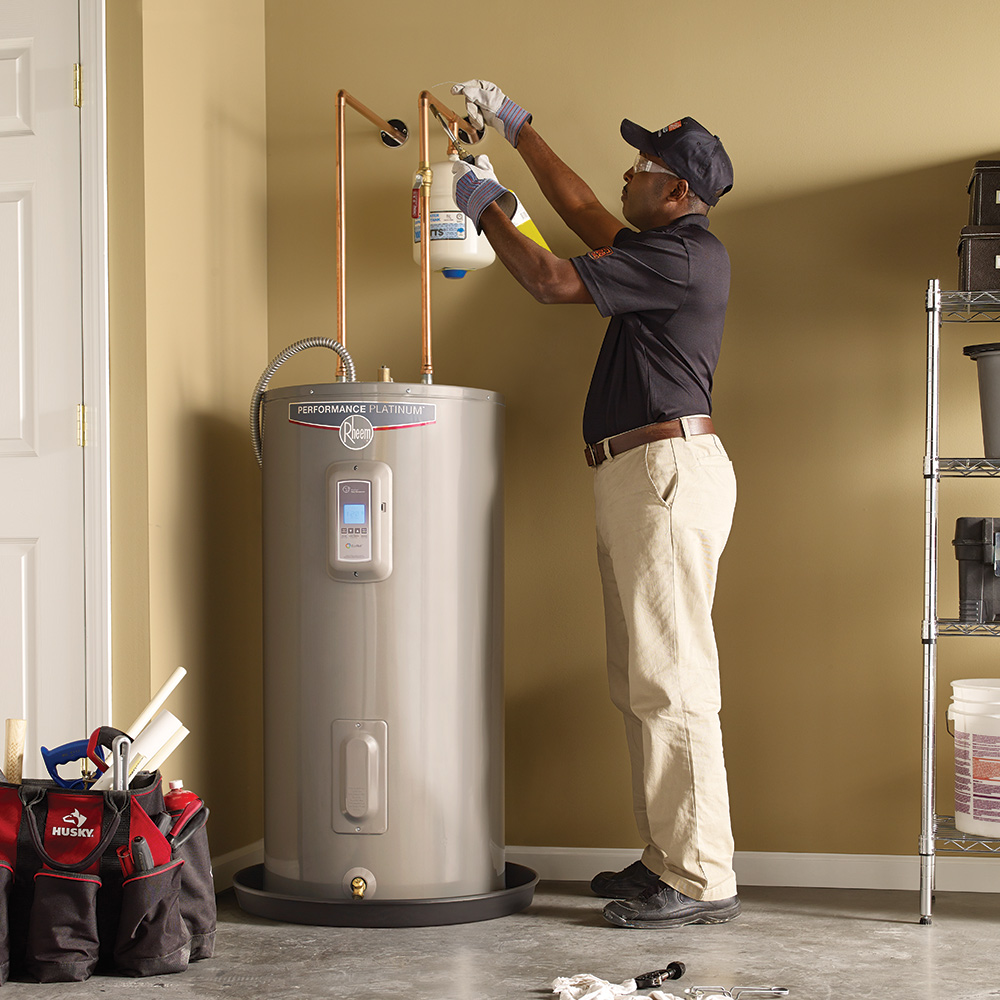Expert Tips on Maintaining Your Home's Hot Water System
Expert Tips on Maintaining Your Home's Hot Water System
Blog Article
Everyone maintains their personal opinion about Water Heater Maintenance Tips You Can't Afford to Forget.

Hot water is important for daily comfort, whether it's for a refreshing shower or cleaning dishes. To ensure your warm water system runs efficiently and lasts longer, normal maintenance is vital. This short article provides useful pointers and insights on just how to maintain your home's hot water system to stay clear of disturbances and expensive repairs.
Introduction
Keeping your home's hot water system might seem challenging, however with a couple of easy actions, you can guarantee it operates smoothly for many years ahead. This overview covers every little thing from recognizing your hot water system to do it yourself maintenance suggestions and knowing when to call expert assistance.
Importance of Keeping Your Warm Water System
Routine maintenance not just prolongs the life expectancy of your hot water system but additionally ensures it runs efficiently. Ignoring upkeep can cause decreased performance, greater energy bills, and even early failure of the system.
Indicators Your Warm Water System Requirements Upkeep
Knowing when your warm water system requires attention can avoid major problems. Keep an eye out for indicators such as inconsistent water temperature, strange sounds from the heating unit, or rustic water.
Understanding Your Warm Water System
Before diving into upkeep tasks, it's handy to comprehend the basic elements of your hot water system. Commonly, this includes the water heater itself, pipelines, anode rods, and temperature level controls.
Regular Monthly Maintenance Tasks
Regular regular monthly checks can aid catch minor problems prior to they rise.
Purging the Hot Water Heater
Flushing your hot water heater gets rid of debris build-up, improving efficiency and prolonging its life.
Checking and Replacing Anode Rods
Anode rods stop rust inside the storage tank. Inspecting and replacing them when broken is critical.
Examining and Readjusting Temperature Level Settings
Changing the temperature setups makes sure optimum performance and security.
DIY Tips for Maintenance
You can do several maintenance tasks on your own to maintain your hot water system in leading problem.
Looking for Leaks
Frequently check pipelines and connections for leaks, as these can lead to water damages and higher expenses.
Evaluating Stress Relief Valves
Testing the pressure safety valve guarantees it functions appropriately and prevents excessive stress buildup.
Shielding Pipes
Protecting hot water pipelines minimizes warmth loss and can save power.
When to Call a Specialist
While DIY upkeep is valuable, some issues need expert expertise.
Complicated Problems Requiring Expert Help
Examples consist of major leakages, electric problems, or if your hot water heater is regularly underperforming.
Routine Expert Upkeep Advantages
Professional maintenance can consist of complete assessments, tune-ups, and ensuring compliance with safety and security requirements.
Final thought
Regular upkeep of your home's hot water system is essential for effectiveness, long life, and expense financial savings. By complying with these pointers and understanding when to look for expert aid, you can make certain a reputable supply of hot water without unforeseen disturbances.
How to Maintain an Instant Hot Water Heater
Before tinkering with your hot water heater, make sure that it’s not powered on. You also have to turn off the main circuit breaker and shut off the main gas line to prevent accidents. Also turn off the water valves connected to your unit to prevent water from flowing into and out of the appliance. 2. When you’re done, you have to detach the purge valves’ caps. These look like the letter “T†and are situated on either side of the water valves. Doing so will release any pressure that has accumulated inside the valves while at the same time avoid hot water from shooting out and burning your skin. 3. When the purge valves’ caps are removed, you have to connect your hosing lines to the valves. Your unit should have come with three hoses but if it didn’t, you can purchase these things from any hardware or home repair shops. You can also get them from retail stores that sell water heating systems. Read the user’s manual and follow it to complete this task properly. When the hosing lines are connected, open the purge port’s valves. 4. You should never use harsh chemical cleaners or solutions when cleaning your unit. Make use of white vinegar instead. It should be undiluted and you’ll probably use about 2 gallons. 5. Now flush your water heater. This task should probably take about 40 minutes. We can’t give you specific directions for this because the procedure is carried out depending on the type, model and brand of your heater. With that being said, refer to the user’s manual. 6. When you’re done draining the unit, you have to turn off the purge port valves again. Remove the hosing lines that you earlier installed on each of the water valves. Put the valve caps (purge port) back in their respective places and be very careful so as not to damage the rubber discs that are found inside these caps. 7. Now that everything’s back in place, check your user’s manual again to find out how to reactivate your water heating system. 8. Once it is working, turn one of your hot water faucets on just to let air pass through the heater’s water supply pipes. Leave the tap on until water flows smoothly out of it. https://www.orrplumbing.com/blog/2014/september/how-to-maintain-an-instant-hot-water-heater/

I came across that review on Tips on Maintaining a Water Heater while doing a search on the web. Are you aware of somebody who is fascinated with the topic? Feel free to promote it. Kudos for being here. Don't hesitate to check our blog back soon.
Schedule Appointment Now Report this page